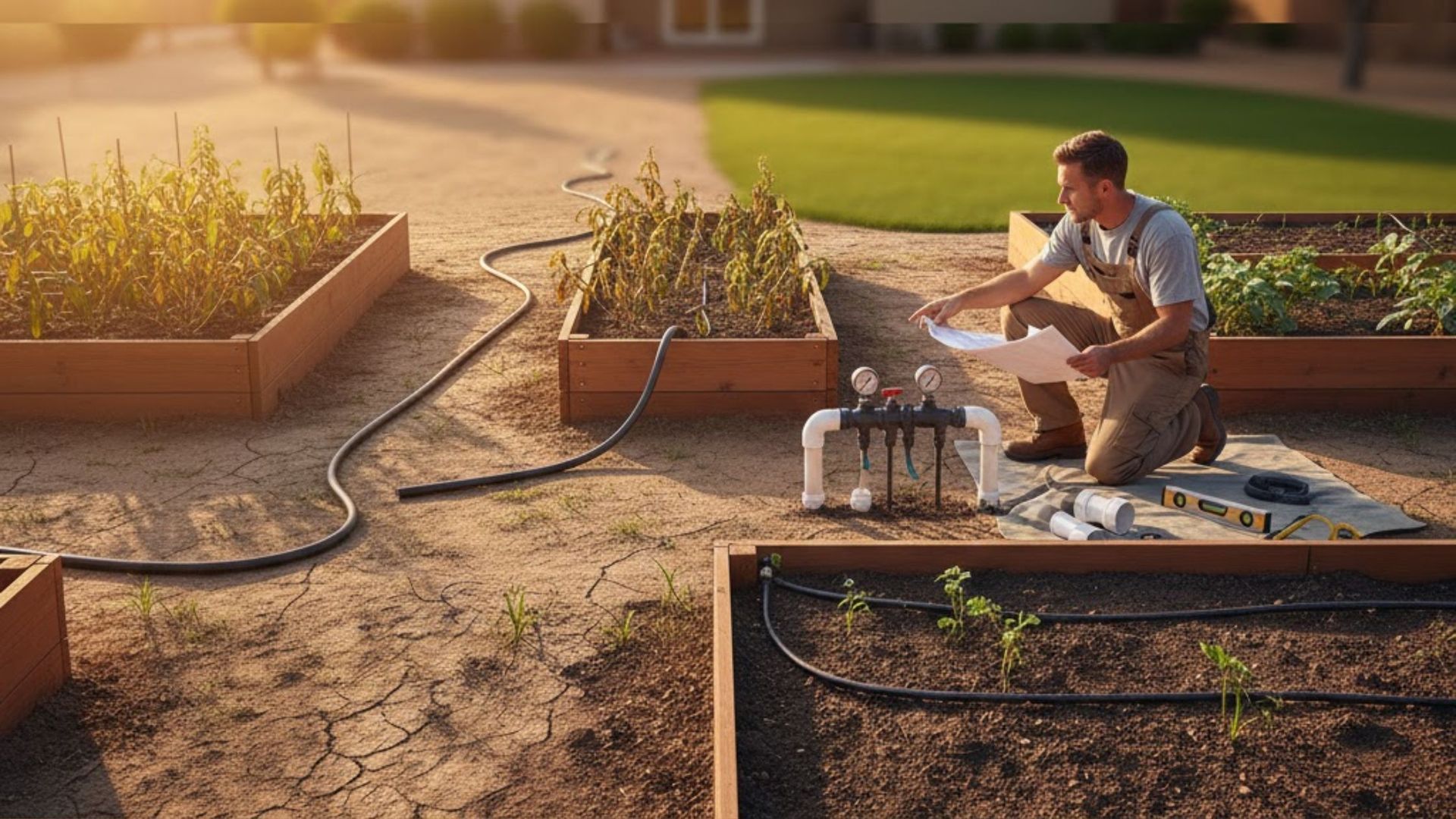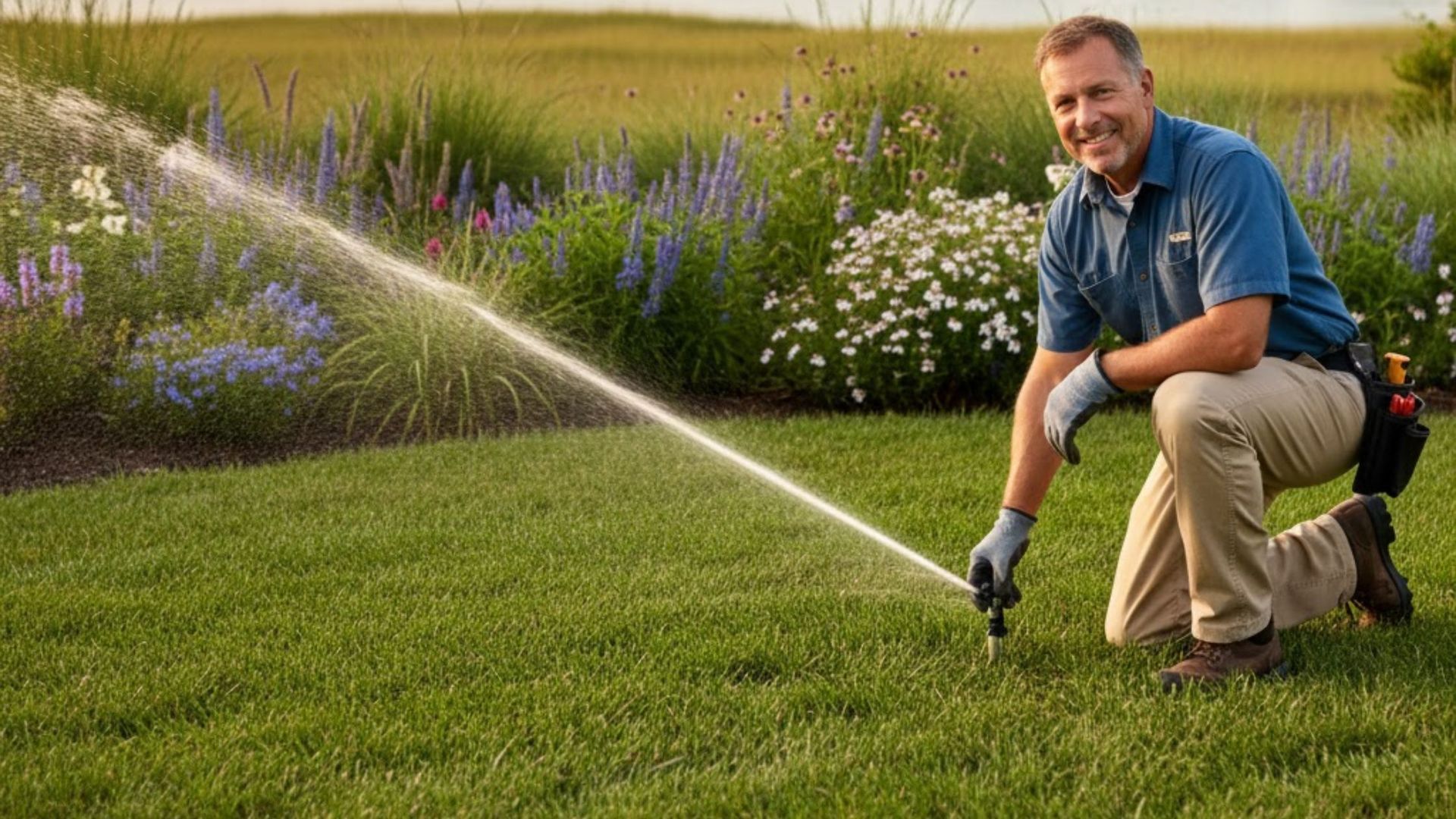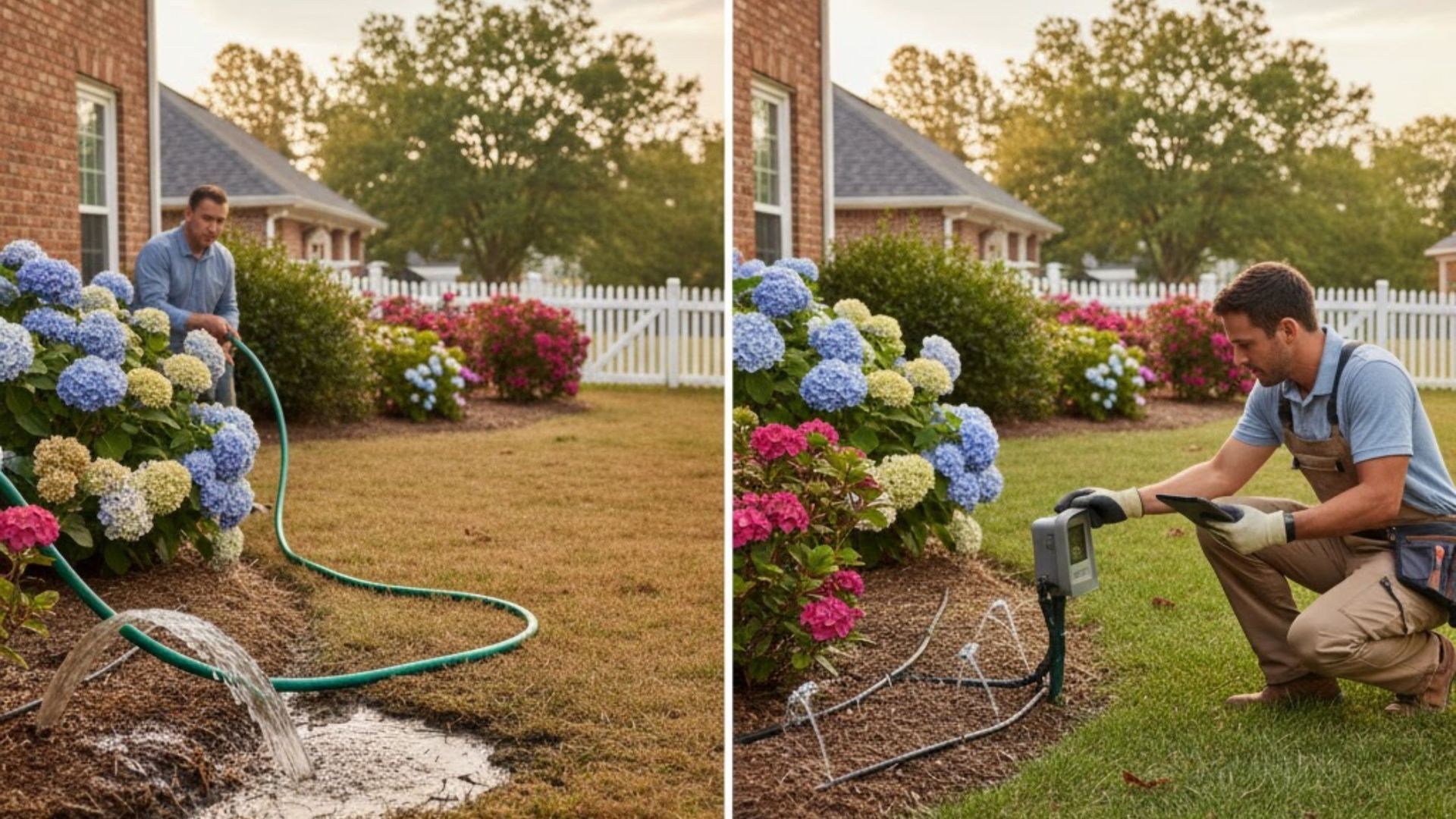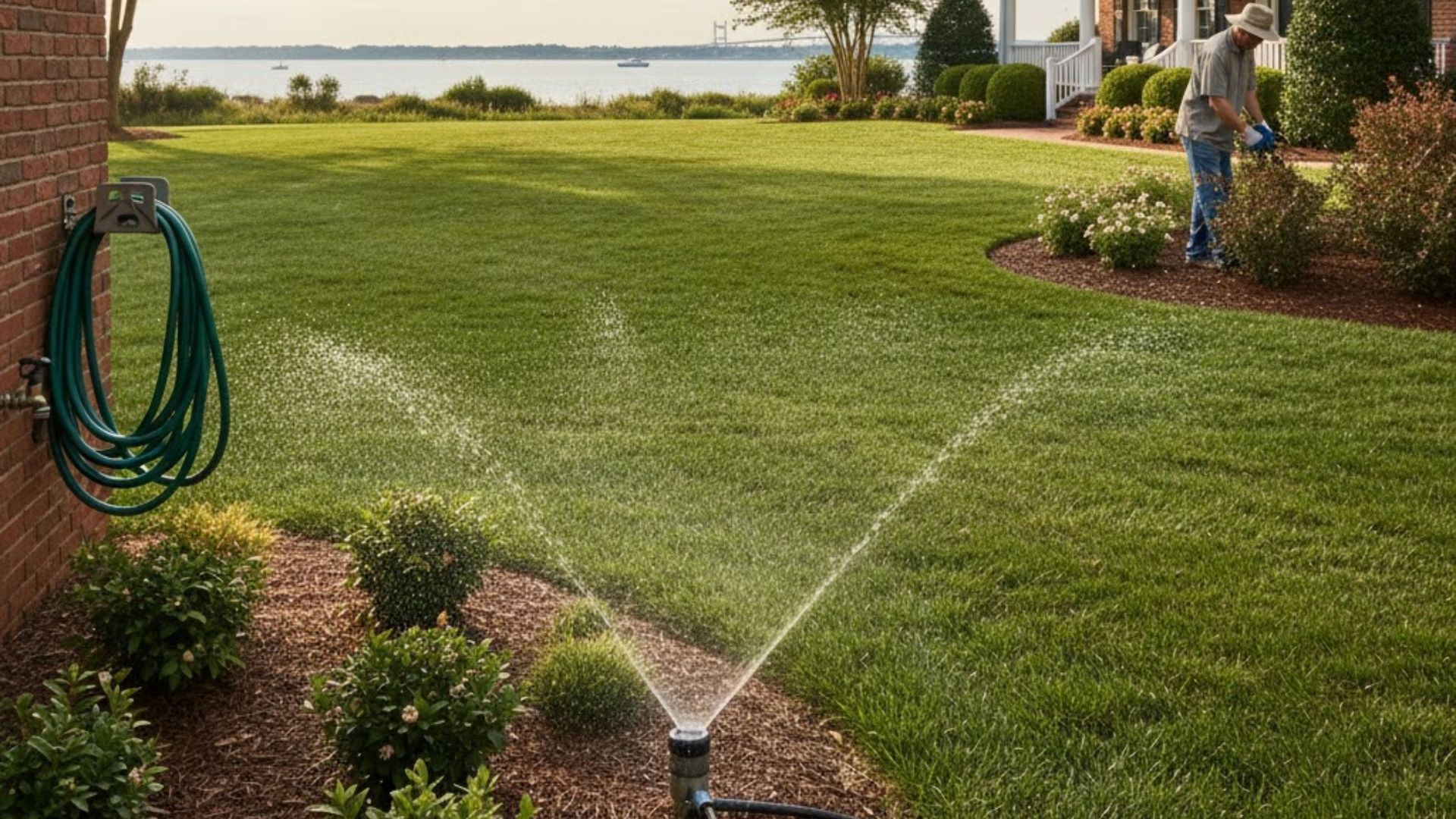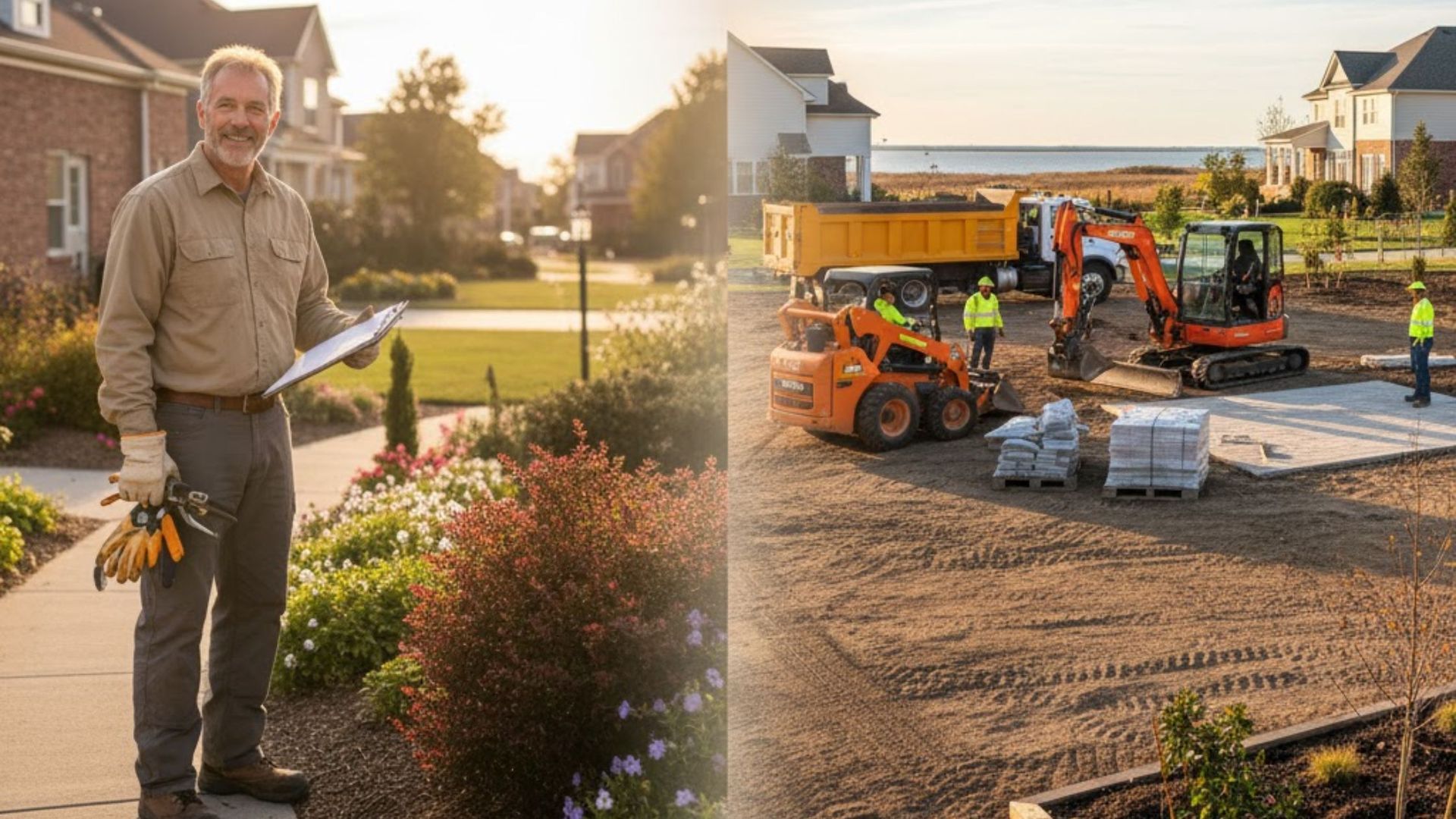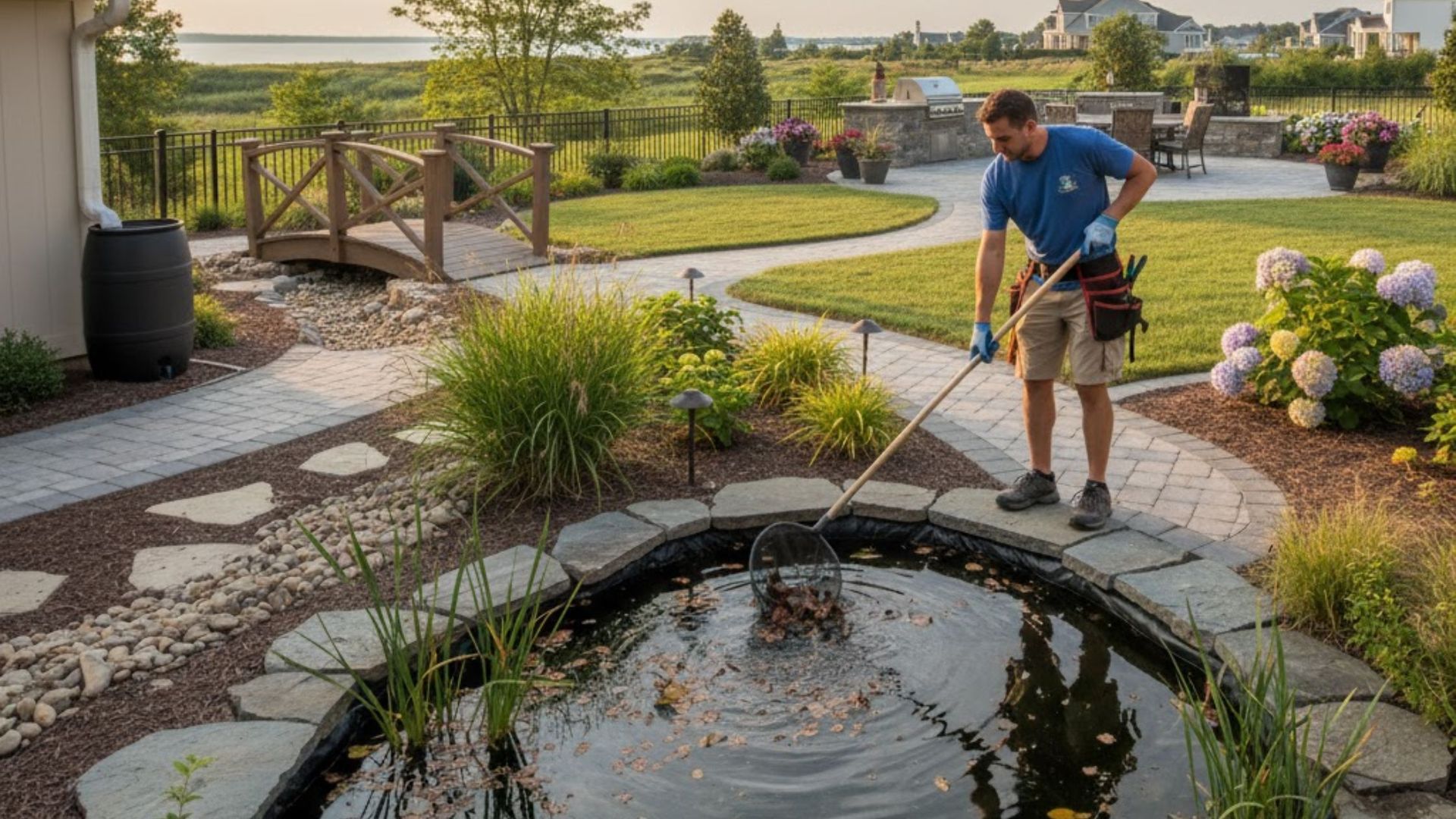Can Yard Grading Be Done in the Winter or Rainy Season in Hampton Roads?

It’s a common scenario for homeowners in coastal Virginia: you finally decide to tackle those persistent drainage issues, but the only free time you have is during the wettest or coldest parts of the year. The question is critical, especially when protecting your foundation is at stake. Can you actually proceed with a major earthmoving project like yard grading when the winter chill sets in or the famous coastal rain returns?
The direct answer is that while Yard Grading Hampton Roads is possible year-round, performing it during the winter or heavy rainy season is generally not advisable and significantly increases cost, complexity, and the potential for poor long-term results. The ideal time for effective grading is when the soil is dry, workable, and frost-free, typically spanning the late spring through early fall. Trying to force the work when the ground is either frozen solid or completely saturated compromises the quality of soil compaction and dramatically heightens the risk of immediate erosion. Understanding the unique factors of the Virginia coastal plain is essential before determining the perfect time to reshape your land.
Is it a Good Idea to Regrade Your Yard in the Winter or Rainy Season?
Regrading your yard is a foundational process that deliberately changes the contour and slope of the ground around your home. This is done to ensure surface water flows away from the structure, preventing serious issues like foundation damage and basement flooding. When considering seasonal yard grading VA, the primary enemy is soil moisture content. The soil must be malleable enough to move and compact but dry enough to achieve the necessary density for long-term stability.
In the winter, the challenge is two-fold: low temperatures and potential for frost heave. In a heavy rainy season, the soil becomes waterlogged, turning the entire landscape into a soft, unstable mess. Both scenarios make the precise work required for proper drainage incredibly difficult. Professional grading is not simply about moving dirt; it is a highly calculated manipulation of the land's pitch to maintain a minimum slope of two to three percent away from the structure. This precision is nearly impossible to guarantee under adverse weather conditions.
The Ideal Window for Effective Earthmoving
The best time for any significant earthmoving or landscaping project is when nature is cooperating. For the Hampton Roads area, this typically means taking advantage of the drier periods that often occur in the late spring and throughout the summer months. These seasons provide the stability needed to ensure the investment in your property yields lasting benefits.
- Late Spring: This is a fantastic time to assess and address drainage failures exposed by winter snowmelt and spring showers. The ground has thawed, and while there might be occasional rain, long dry spells offer ideal conditions.
- Summer: The most optimal time for grading. Predictable weather and low soil moisture allow for efficient operation of heavy equipment and guarantee excellent soil compaction, which is crucial for preventing future settling and unevenness.
- Early Fall: This serves as the last prime window. Cooler temperatures are often more comfortable for labor, and the ground is usually still firm from the summer heat, reducing the likelihood of water saturation that plagues the spring.
Choosing the right time based on the local climate significantly reduces the project timeline and minimizes the chances of having to perform costly rework later on.
The Unique Geographical Challenges of Yard Grading Hampton Roads
The coastal region of Virginia, including cities like Norfolk, Virginia Beach, Chesapeake, and Newport News, presents specific topographical and geological hurdles that standard inland grading practices often fail to resolve. Homeowners here must recognize that effective drainage is a matter of engineered necessity rather than simple luck.
One of the most significant factors is the generally flat topography of the region. Unlike areas with natural hills or slopes, water in Hampton Roads has very little gravity-assisted flow. When precipitation occurs, surface water tends to linger, pooling in subtle depressions because there is no natural elevation change to guide it quickly away. This lack of pitch necessitates creating an intentional slope that must be maintained with extreme accuracy across the entire property.
The High Water Table and Soil Composition
The high water table is another critical element. Located near sea level and the Chesapeake Bay, the subsurface soil and rock in the region are often already saturated, meaning the ground has a very limited capacity to absorb new rainfall. When heavy rain or a tropical storm system moves in, the soil quickly reaches full saturation, leaving nowhere for the excess water to go except to pool on the surface.
Furthermore, the soil composition often contains a high percentage of clay. Clay soil, when dry, is solid and dense, but when wet, it becomes incredibly heavy, sticky, and impermeable. This combination of flat land, high water table, and clayey soil means that the ground takes far longer to dry out after a rain event compared to areas with sandier or loamier soil, making grading work infeasible for extended periods.
For these reasons, the objective of Hampton Roads Irrigation & Landscape is to not just move dirt but to create a permanent water management solution that accounts for these challenging regional dynamics.
Why Winter Grading is Often Impractical
While the Hampton Roads region does not experience the deep, prolonged freezes common in northern states, it certainly sees enough winter weather to impede grading. The primary obstacle in the colder months is the presence of frost in the upper soil layers. When the ground freezes, it expands, creating an extremely hard, unworkable surface.
Trying to excavate soil that has been subjected to a deep frost is both time-consuming and damaging to equipment. Heavy machinery struggles to break through the frozen layer, resulting in slower progress and much higher fuel and labor costs. More importantly, the frozen nature of the soil makes it impossible to achieve the fine-tuning and blending necessary for a proper, gentle slope.
The Problem of Compaction in Cold Conditions
Proper soil compaction is non-negotiable for a successful grading project. When you reshape the land, the new soil must be consolidated so it will not settle unevenly over time, which would recreate the original low spots and drainage issues. Cold and freezing conditions severely interfere with this process.
- Inconsistent Soil Density: Frost causes the soil to be unevenly dense. When the ground thaws, pockets of loose soil can remain, leading to future sinkage.
- Frost Heave Risk: The repeated freeze-thaw cycles common in late winter and early spring cause the ground to shift, which can entirely destroy the newly established grade and slope before vegetation has time to secure it.
- Wasted Materials: Soils that are handled while wet or frozen can be damaged. The structure of the soil is compromised, making it less effective for use as a base or topsoil, and often leading to wasted materials and the need for new, higher-quality fill.
The need for highly stable subgrades is magnified when dealing with the coastal water table. If the grading foundation is unstable, the project will fail regardless of the surface appearance.
Overcoming the Challenges of Rainy Season Yard Prep
The rainy season, whether it’s the persistent nor’easters of spring or the heavy downpours associated with tropical systems in late summer and fall, poses its own unique set of problems for earthwork. When soil is fully saturated, it loses its structural integrity and becomes heavy and unstable.
Moving saturated soil, especially the clay-heavy types found in seasonal yard grading VA, is incredibly difficult. It sticks to machinery, slows down the process, and prevents the soil from being placed and spread evenly. The worst-case scenario involves heavy equipment driving over overly wet soil, leading to a phenomenon called "pumping," where the weight of the machine forces moisture and fine particles to the surface, causing deep ruts and further compromising the subgrade.
The Erosion Threat and Its Impact on New Grades
Erosion is the most immediate danger when grading during periods of heavy precipitation. Once the land is graded, the bare earth is extremely vulnerable to moving water until a protective layer of turfgrass or other vegetation can be established. Even a moderate downpour on freshly graded soil can be catastrophic.
- Washing Away the Grade: New topsoil and fill material, which are essential for creating the proper pitch, can be washed away in sheets or carved into deep channels known as gullies.
- Compromising the Pitch: The exact, calculated slope that was created to guide water away from the foundation is ruined, meaning the underlying drainage problem returns almost immediately.
- Sediment Runoff: Eroded sediment pollutes local waterways, an important consideration given the proximity of Hampton Roads to the Chesapeake Bay and the extensive tidal areas. Protecting the James River and other local resources is always a factor in responsible land management.
To prevent this immediate failure, responsible Yard Grading Hampton Roads is always planned around forecasted dry periods. Trying to work against the weather results in poor outcomes that eventually require correction, increasing the overall expense for the homeowner.
Essential Entities and Principles for a Successful Grade
Successful grading is an intersection of hydrology, engineering, and landscape design. It involves several key components that must be addressed to ensure water is managed correctly across the entire property, not just near the house.
The Critical Two-Percent Rule
The foundation of any effective grading project is establishing the correct pitch. Experts consistently recommend a minimum slope of two to three percent away from the building’s foundation. This measurement translates to a drop of approximately six inches of elevation over the first ten feet extending out from the structure. This slope is steep enough to ensure reliable surface runoff but gentle enough to prevent soil erosion. Failing to maintain this subtle, continuous decline is an invitation for water to settle.
Beyond the Basic Slope: Supplemental Drainage
While grading provides the main protection, properties, especially those with high groundwater or extremely high clay content, often require additional engineered solutions. These features work in conjunction with the surface pitch to capture, contain, and redirect massive volumes of water during peak storms.
- French Drains: These are perhaps the most common secondary solution. A French drain is a trench filled with gravel, containing a perforated pipe that redirects surface and subsurface water away from the foundation to a designated discharge point.
- Swales and Berms: Swales are broad, shallow, gently sloping channels designed to manage and direct sheet flow runoff. Berms are raised mounds of earth that help intercept and redirect water. They are excellent for creating natural drainage features that blend seamlessly into the landscape.
- Catch Basins: These are essentially collection boxes with grates installed in low spots where water naturally pools. They are connected to underground piping that moves the collected water to a safer location, such as a storm drain or a drainage swale away from the home.
The decision of which supplemental system to install is based on the volume of water, the soil type, and the limitations of the surrounding landscape. The professionals at Hampton Roads Irrigation & Landscape will analyze these variables to recommend the most robust system for your specific property.
When Grading is Unavoidable: Strategies for Winter Work
There are instances where yard grading must proceed despite poor weather conditions. These are usually in cases of emergency, such as a severe drainage failure threatening the foundation, or complex construction projects with rigid deadlines. In these situations, special techniques must be employed to minimize risk and manage the difficult conditions.
Specialized Winter Grading Techniques
When faced with unfavorable soil conditions, professional winter grading services must rely on advanced methods and materials to stabilize the ground. These solutions are generally reserved for large-scale, commercial, or time-sensitive residential projects where waiting is not an option. They involve significant additional investment.
- Soil Stabilization: When the ground is saturated, one technique involves using stabilizers like lime or cement (not agricultural lime) to chemically dry and stabilize certain clay soils. This process is costly but creates a nearly weatherproof subgrade that can withstand further moisture without losing its bearing strength.
- Weatherproof Subgrades: Another common practice is to grade to the subgrade elevation and then immediately place a layer of well-graded stone base, such as crusher run stone. This stone naturally sheds water and helps protect the underlying soil from saturation and subsequent damage caused by heavy construction traffic.
- Crowning the Pad: For new construction, contractors may grade the building pad high and crown it (giving it a slightly domed shape) to ensure that water sheds off the critical area immediately. The pad can then be cut to the final subgrade elevation just before the foundation or slab is constructed.
Managing Equipment and Site Safety
Working on saturated or frozen ground requires careful management of construction equipment to protect both the work site and the surrounding landscape. The key is reducing the impact of heavy machinery on vulnerable, wet soil.
- Lighter Equipment: To prevent soil "pumping" and deep rutting on wet soil, lighter construction equipment is sometimes deployed. Minimizing the weight that crosses the unstable ground reduces the chance of destroying the newly laid grade or compacting the soil too deeply and unevenly.
- Designated Traffic Routes: Establishing stabilized access roads, often using geotextiles or stone, helps direct construction traffic away from unstable areas of the yard. This prevents repeated crossing of vulnerable soil layers, which can lead to rapid subgrade failure.
- Site Housekeeping: Simply maintaining good order on the site is crucial. Ensuring that temporary slopes are established to clear water quickly and preventing the buildup of runoff near the work area are simple yet effective measures to mitigate the effects of continuous rain.
These techniques demonstrate that winter grading services are possible, but they require highly specialized knowledge, careful planning, and a much higher financial commitment due to the increased labor, materials, and time required. Most homeowners find it far more economical to simply wait for better weather. If you want to know more about the specialized process, please contact us.
Long-Term Benefits of Properly Timed Grading
Choosing the optimal time for your grading project results in long-term advantages that protect your home and enhance your property's value and usability. A successful grade is a one-time fix that prevents numerous recurring problems.
Protecting Your Home’s Structural Integrity
Water is the single greatest threat to a home's foundation. When soil around the foundation is constantly saturated, it can swell and exert immense hydrostatic pressure on the basement walls. Conversely, when it dries out rapidly, it shrinks, causing voids. This cycle of expansion and contraction leads to cracking and shifting over time.
By ensuring the proper pitch and diverting water at least ten feet from the structure, you stabilize the moisture content in the critical soil perimeter. This minimizes the risk of foundation issues and eliminates the damp, musty conditions that lead to basement mold and poor indoor air quality. This kind of preventative maintenance is vastly more cost-effective than structural repair. It secures your primary asset against long-term deterioration.
Enhancing Landscape Health and Usability
Beyond structural protection, proper grading significantly contributes to the overall health and aesthetics of your yard. Soggy, wet lawns are not just an inconvenience; they actively harm your turfgrass and ornamental plantings.
- Preventing Root Rot: Turfgrass roots need oxygen. When they are constantly submerged in standing water, they essentially drown, leading to dead patches, disease, and a muddy, unusable landscape. A good grade ensures water percolates efficiently or is moved off the lawn entirely. This promotes a healthier, greener lawn.
- Controlling Pests: Standing water, even small puddles, becomes an immediate breeding ground for mosquitoes. In warm weather, a single thimble-full of stagnant water can rapidly produce thousands of mosquitoes. Eliminating standing water through effective yard grading Hampton Roads is one of the best forms of natural pest control. This improves the livability and enjoyment of your outdoor space.
- A Solid Base for Projects: If you plan to install a patio, a walkway, or a new garden bed, starting with a properly graded, stable base is crucial. Grading prepares the ground for subsequent hardscaping, ensuring your outdoor living spaces remain level and durable for decades to come.
We believe in the quality of our results and often encourage prospective clients to look at our review section to see the impact of properly executed grading. We pride ourselves on creating permanent, attractive solutions.
What to Do While Waiting for Dry Weather
If you have identified a drainage issue but are in the middle of the winter or a particularly wet spring, you should not simply wait for the best time without taking action. There are several preparatory steps you can take to mitigate the current problem and ensure the grading process is smooth when the time comes.
Temporary Water Management Strategies
While these steps won't permanently fix a foundational grading issue, they can provide critical, temporary relief and limit damage until professional earthwork can begin. The goal is to safely direct water away from the most vulnerable parts of your property.
- Gutter and Downspout Maintenance: Ensure your gutters are completely clear of debris, which is a common source of overflow and localized flooding. Use downspout extensions to direct water at least four to six feet away from your foundation. This is the first line of defense against surface water accumulation.
- Surface Aeration: If your lawn is chronically soggy but not actively pooled, using a core aerator (if the ground isn't frozen) can help break up soil compaction. This allows surface water to penetrate the soil more easily rather than just sitting on top. Aeration improves the soil's permeability.
- Temporary Barriers: In emergency situations, you can use sandbags or temporary wooden barriers to divert water around the most vulnerable areas, like basement window wells or foundation vents. These are stop-gap measures to redirect sudden flows.
- Clear Debris: Remove any leaves, branches, or other organic matter that can block minor existing drainage channels or catch basins. Good site housekeeping is the cheapest form of water management and should be practiced year-round.
Planning and Permits
The waiting period is an excellent time to finalize your plan and secure any necessary approvals. In the coastal Virginia region, extensive earthmoving can sometimes require permits, especially if you are working near wetlands, easements, or property lines.
- Get a Professional Assessment: Use this time to have a professional survey and assessment of your property's current slope and drainage patterns. This detailed planning ensures the eventual work is precise and compliant with local regulations. Understanding the precise elevation changes needed is key to success.
- Budgeting and Scheduling: Finalize your budget and secure your project schedule with a trusted provider. Since the optimal grading window is relatively short, professional teams like Hampton Roads Irrigation & Landscape tend to book up fast. Getting on the schedule early ensures your project starts as soon as conditions are favorable.
- Material Sourcing: If your project requires significant amounts of specialized fill dirt or gravel, planning ahead allows the contractor to source these materials cost-effectively and have them ready for immediate deployment when the dry window arrives. This minimizes delays.
The Role of Ground Cover in Erosion Control
Once grading is complete, the bare soil is highly susceptible to erosion, particularly in the heavy rainfall environment of the Virginia coast. The work is only fully protected when vegetation is established, providing a stable erosion control layer. This process requires its own seasonal timing considerations.
Seeding and Planting After Grading
The time of year you finish grading will dictate the success of your revegetation efforts. If you grade in late spring or summer, you are dealing with warmer temperatures that favor warm-season grasses but require diligent irrigation to establish roots before the heat fully settles.
- Cool-Season Grasses: In the Hampton Roads area, the absolute best time to plant cool-season grasses, like fescue, is in the fall. If grading is completed in late summer, seeding immediately allows the grass to establish a robust root system before the first frost.
- Warm-Season Grasses: Grasses like Bermuda or Zoysia thrive when planted in the late spring and early summer when the soil temperatures are consistently high. If your property is graded in the spring, you can take advantage of the natural growth cycle of these warm-season varieties.
- Temporary Covers: If grading is completed just before winter hits, planting a temporary cover crop or laying down erosion control blankets is crucial to protect the exposed soil from rain and frost until the spring planting window opens.
Mulching and Landscape Beds
For areas that will become landscape beds rather than turf, applying a thick layer of organic mulch (around three to five inches) immediately after grading is an excellent strategy. Mulch protects the soil from the impact of heavy raindrops, slows down surface water flow, and helps retain the optimal moisture level beneath, preventing the underlying soil from rapidly drying out and cracking.
This layer of mulch acts as a temporary stabilizer, buying time for permanent plantings, such as shrubs and ground covers, to take hold. These deeper-rooted plants will provide the final, long-term stabilization, anchoring the newly shaped soil against gravitational forces and water runoff.
Frequently Asked Questions (FAQs) About Yard Grading
We often receive similar questions from homeowners concerned about drainage and the best time to undertake this vital improvement. Here are five of the most common inquiries, answered based on our experience in the seasonal yard grading VA climate.
1. What is the recommended minimum slope away from a house foundation?
The standard professional recommendation for grading a residential property is to establish a minimum pitch of two to three percent away from the home’s foundation. In practical terms, this means the ground should drop approximately six inches of elevation over the first ten feet extending outward from the structure. This slope is calculated to ensure that all rainfall runs off effectively without causing rapid erosion.
2. Can poor grading really lead to foundation damage?
Absolutely, yes. Poor grading is a leading cause of home structural issues. When the ground slopes toward the foundation, it concentrates rainwater, causing the adjacent soil to become saturated. This constant moisture leads to hydrostatic pressure against the walls and cyclical soil expansion and contraction, which can result in cracks in the foundation, bowing basement walls, and expensive water penetration problems.
3. How does the local water table affect yard grading results in Hampton Roads?
In Hampton Roads, the naturally high water table means that the subsoil is often close to saturation. When grading, this limits the soil’s capacity to absorb heavy rainfall. This requires the engineered slope to be even more effective at diverting surface water quickly. Furthermore, if the grade is compromised, the high water table can contribute to standing water remaining on the surface for much longer periods.
4. Is it better to use a French drain or a swale to fix pooling water?
The choice between a French drain and a swale depends on the cause and extent of the pooling. A swale (a shallow, gentle depression) is excellent for managing sheet flow across a large area and blending into the landscape naturally. A French drain is better for intercepting high volumes of subsurface water or channeling water from a very specific point, such as a low corner near a basement. Often, the most effective solution is a hybrid system utilizing both techniques.
5. How long does the grading process typically take?
The duration of a grading project varies significantly based on the size and complexity of the property. For most standard residential yards, the process—from initial excavation and shaping to final compaction—typically takes anywhere from one to three days, assuming dry, optimal working conditions. Projects involving significant earth removal, advanced drainage systems like dry wells, or extensive fill material may take longer.
Conclusion: Planning for a Permanent Solution
Attempting Yard Grading Hampton Roads during the winter or the peak of the rainy season, though occasionally necessary in emergencies, is fundamentally working against the elements. The risks of frozen ground, soil saturation, and immediate erosion compromise the integrity of the finished slope, leading to ineffective drainage and, often, the need for costly correction down the line.
The intelligent, long-term solution is to plan your project for the optimal dry periods—late spring, summer, and early fall—when the soil is most cooperative. This allows for precise shaping, excellent compaction, and the highest chance of establishing a robust, vegetated cover that locks the new grade into place. By planning proactively and working with specialists who understand the unique coastal challenges, you ensure that your investment in Yard Grading Hampton Roads is a permanent shield against water damage, protecting your home and transforming your landscape.



